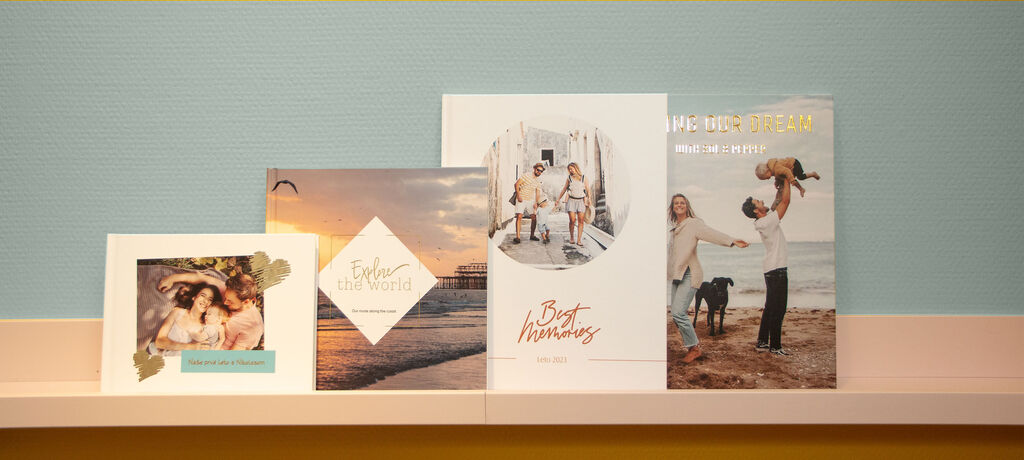
Inspiration
Photo books vs Photo albums: Which is best for your memories?
12th August 2025
Your precious memories deserve more than just being forgotten in a drawer or kept as endless files on your phone or computer. Displaying your favourite moments in a photo book or photo album helps you celebrate them beautifully and keeps them accessible to share with loved ones.
But what’s the difference between a photo book and a photo album? While they serve similar purposes, these two products have some key differences that may make one a better fit for your needs than the other. Let’s explore the benefits of both and help you decide!
What is a photo album?
The photo album is the long-standing favourite for organising printed photos and looking through memories in a hands-on, traditional way.
There are two main types of photo albums:
- Slip-in albums
These albums have pre-made pockets for printed photos, often in standard sizes like 6x4”. You can insert photos into these pockets and swap them out anytime, making them ideal for updating your collection.
- Traditional or scrapbook-style albums
In these albums, your photos are mounted onto card or craft paper using adhesive or photo corners. These allow for a more personalised and creative touch, as you can add stickers, captions, or even mementoes like tickets or notes.
A photo book takes a modern approach to preserving memories. Instead of using preprinted photos, your images are printed directly onto the pages of the book in a professional, high-quality finish. A CEWE PHOTOBOOK is fully personalisable, offering incredible design features and premium materials that elevate your photos and help you tell a story. You have full creative freedom, designing from scratch or with helpful tools in our free Creator Software. Your memories can be celebrated the way they’re meant to be.
Photo books vs photo albums: a quick comparison
Here’s a side-by-side look at the differences between a traditional photo album and a CEWE PHOTOBOOK:
| Feature | Photo album | CEWE PHOTOBOOK |
|---|---|---|
| Choosing photos | Add printed photos, usually in specific sizes (e.g., 6x4”). | Photos selected digitally and fully designable using CEWE tools. |
| Customisation | Allows for hands-on creativity (stickers, notes, scrapbook-style embellishments). | Fully customisable with captions, themes, and layouts designed digitally; can include QR video codes. Customise your cover. |
| Space required | Albums may bulk out as photos are added over time, making them thicker to store. | Compact by nature; additional pages only slightly increase size, preserving a sleek finish. |
| Replicability | Creating duplicates is difficult and time-consuming. | Easily reorder duplicate photo books with the same design in various sizes (small, large, square, etc.). |
| Longevity | Relies on the quality of prints and album materials. | Uses premium-quality, long-lasting paper and ink to preserve images beautifully. |
Print your photos for your photo album
If you're considering creating a traditional photo album, you can easily print your images in beautiful detail with a variety of finishes and sizes to choose from, perfect for adding to your album. Learn more about our Photo Prints and get started today!
Photo books vs photo albums: which should you choose?
Both photo albums and photo books are wonderful ways to cherish and display your memories, but the choice depends on your personal preferences and needs.
Choose a Photo Album If...
- You enjoy the hands-on process of selecting, printing, and arranging photos.
- You want something flexible, where photos can be swapped out over time.
- You like traditional craftsmanship, with the option to add creative embellishments.
Choose a Photo Book If...
- You want a modern, sleek, and professional presentation for your memories.
- You’d prefer to design your photo collection digitally, with full creative freedom.
- You need to create duplicates (e.g., to gift relatives or friends).
Essential tips for preserving memories
- If you already own albums but need additional prints, explore CEWE’s photo printing options.
- Don’t forget that a CEWE PHOTOBOOK is perfect for storytelling—you can even add QR codes to include video clips alongside your photos. Learn how to add video clips to your CEWE PHOTOBOOK.
We're CEWE - we love photos
Whether you choose a traditional photo album or a CEWE PHOTOBOOK, you'll have all the tools and products needed to help you bring your memories to life. Explore our customisable photo books or order new Photo Prints for modern preservation.
Your memories deserve to be celebrated - start creating today!







